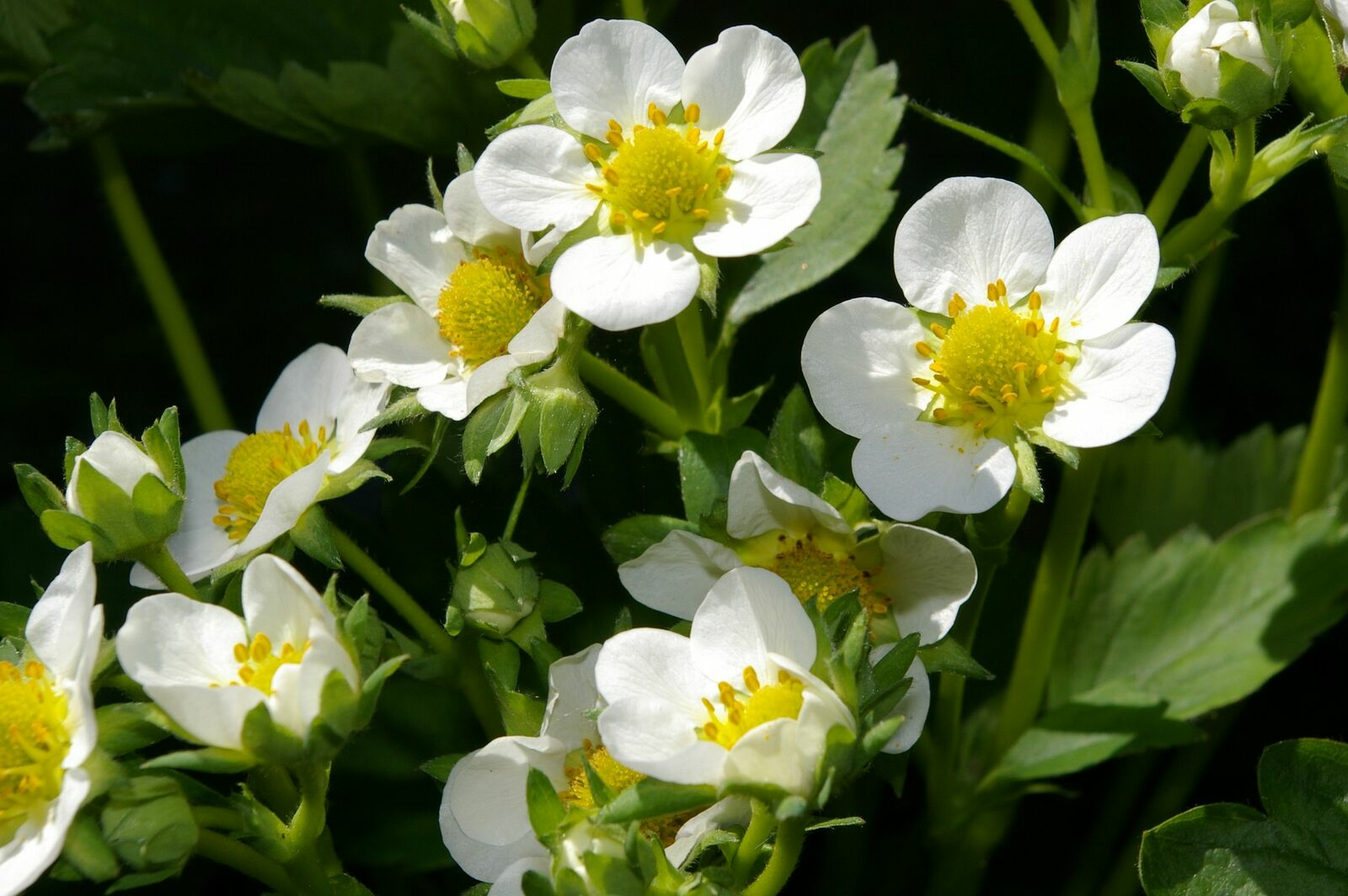
Companion Planting With Strawberries: Companion Plants and Planting Plan
Companion planting with strawberries has several advantages: In addition to better plant health, it also increases biodiversity in your garden. You can find out which plants are companion plants for strawberries and which you should plant elsewhere in this article. There are also tips on succession cropping and crop rotation as well as ideas and examples of companion planting plans with strawberries.
This Article Contains:
- Planting Strawberries: Location & Soil
- Strawberries in Companion Planting
- What Grows Well With Strawberries?
- Which Herbs Go Well With Strawberries?
- Bad Companion Plants for Strawberries
- Companion Planting Table: Good and Bad Companion Plants at a Glance
- Succession Cropping & Crop Rotation With Strawberries
- Companion Planting Plan With Strawberries: Ideas & Examples
- PDF: Your Planting Plan With Strawberries
- Frequently asked questions about strawberries in companion planting
Quick Overview
Planting Strawberries: Location, Planting Distance
- Location: sunny to semi-shady location with light, well-drained soil
- Planting distance: 20 x 30 cm/7.9 x 11.8 in
- Caution: Strawberries are susceptible to diseases such as rhizome rot, root rot or gray mold if the soil is waterlogged, rich in nitrogen and planted too close together!
Good and Bad Companion Plants for Strawberries
- Antagonistic plants: cauliflower, chinese cabbage, kale, lovage, pak choi, palm cabbage, Brussels sprouts, jerusalem artichoke, white cabbage, savoy cabbage
- Companion plants: bush bean, cress, garlic, kohlrabi, leek, lemon balm, mint, oregano, physalis, postelein, radish, daikon, marigold, rocket, lettuce, chives, spinach, onions
Planting Strawberries: Location & Soil
Depending on the variety, strawberry plants prefer a sunny to semi-shady location. The soil should be light and well-drained, as strawberries do not cope well with waterlogging. In compacted soil with waterlogging, they become more susceptible to diseases and can easily become infected with fungal diseases such as rhizome rot (Phytophthora cactorum) or red root rot (Phytophthora fragariae). However, black root rot is also a danger in unfavorable soil conditions and can be triggered by various fungi, nematodes or abiotic factors.
Strawberries are generally quite susceptible to various fungal diseases. In addition to those mentioned above, they are also frequently attacked by gray mold, red and black spot or powdery mildew. Various pests can also be found on strawberry plants, such as the strawberry blossom moth and root gall moth. For healthier and more robust strawberry plants, a mixed culture can help as a preventative measure. You can find out more about growing strawberries with Tips on Planting, Caring for and Picking Strawberries in this article.
Strawberries in Companion Planting
Planting a Mixed Crop is a helpful method to ensure that your strawberries grow resiliently. A high level of biodiversity in the bed reduces the likelihood of infestation with diseases or so-called pests. However, it is important to choose good companions that will strengthen the strawberry plants. However, you should make sure that the companions are not susceptible to the same pathogens, otherwise an infestation will be encouraged.
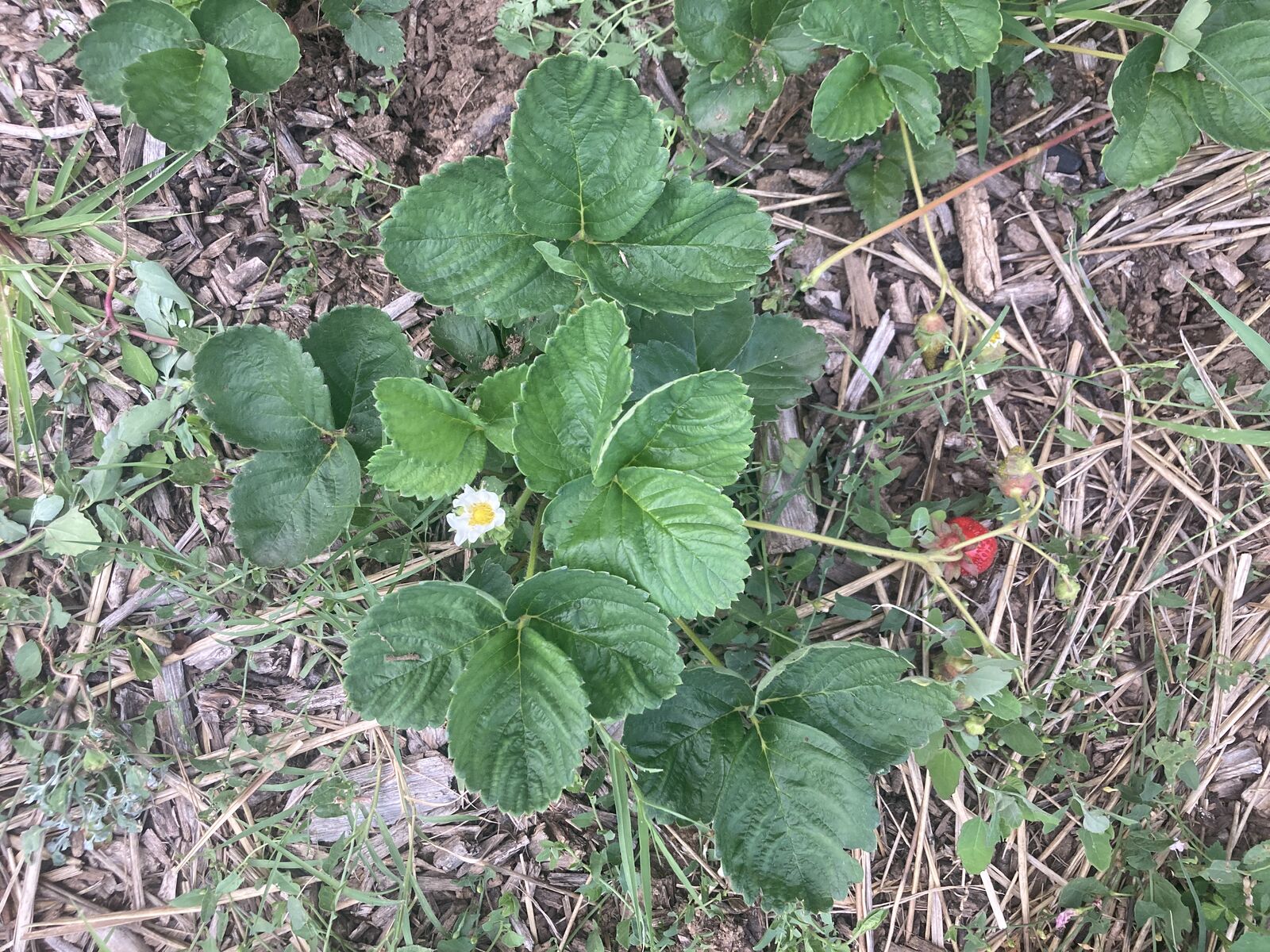
Growth of Strawberry Plants
Strawberries are shallow-rooted and their roots only develop in the first 15 cm/5.9 in of soil. They are therefore sensitive to weeds and not very competitive. They also grow small, compact and bushy, which is why they can compete for light with very tall plants. However, the needs of different strawberry varieties also differ here and wild strawberries, for example, also like to grow in partial shade. To ensure that your strawberry plants thrive, it is best to choose plants that complement them well in terms of growth habit and nutrient requirements.
Nutrient Requirements: Strawberries Are Medium Feeders
Strawberries have a high potassium requirement, but are more susceptible to diseases if they are heavily fertilized with nitrogen. They are medium feeders and generally only have a moderate need for nutrients. You can find out How to Fertilize Your Strawberry Plants Correctly and Which Fertilizers Are Suitable here in this article.
Although medium and light feeders usually complement each other well with heavy feeders, the nutrient requirements of strawberries are slightly different. Most heavy feeders have a high nitrogen requirement and need to be fertilized regularly, which is not good for strawberries. This is why most heavy feeders do not do well next to strawberry plants.
What Grows Well With Strawberries?
In a mixed culture, strawberries can benefit from their companions. Depending on which garden inhabitants or diseases are causing you problems, you can support your strawberry plants with the right companion plants. Companion planting also allows you to make good use of the space in the bed, both above and below ground. Find out which plants can help with which diseases and pests below:
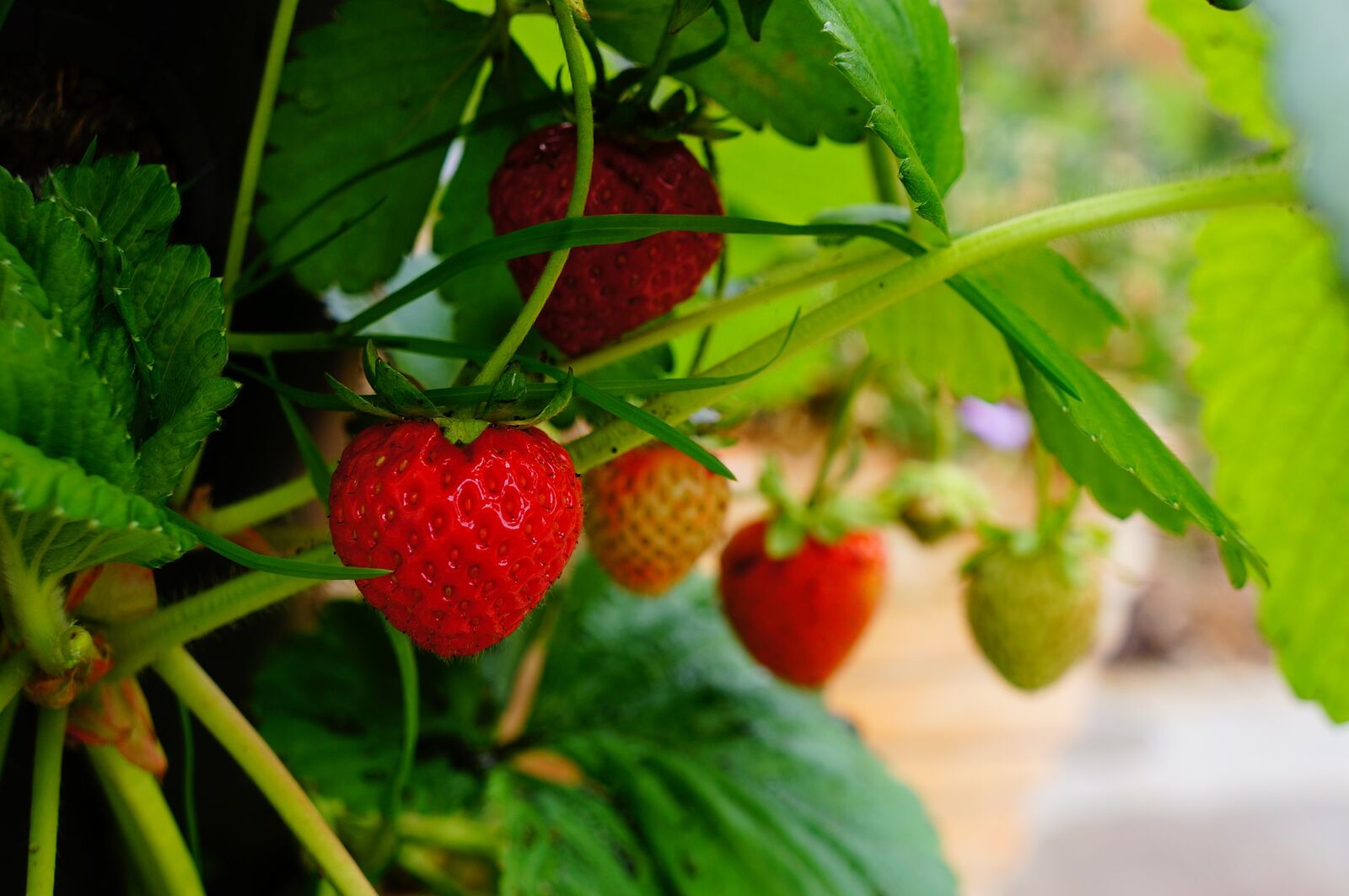
Planting Bush Beans and Strawberries Together
Bush beans go well next to strawberries. They complement strawberries well in terms of their growth habit, as they grow more vertically above ground. Below ground, they form medium to deep roots that do not get in the way of the strawberry roots. Bush beans are part of the legume family, which are known for fixing nitrogen in the soil. However, bush beans fix significantly less nitrogen than runner beans and draw a large part of their requirements from the soil. For this reason, runner beans are also less suitable as direct companions for strawberries, as the strawberry plants otherwise become more susceptible to disease.
Kohlrabi, Daikon and Cress Next to Strawberries
Kohlrabi can also be planted next to strawberries. Kohlrabi is said to help keep leaf spot diseases away from strawberries. As the only member of the cabbage family, kohlrabi is a good companion for strawberries. All other cabbages are considered antagonistic plants. Together with the radish genus with daikon and radishes as well as the cress, they are the exception among the Brassicaceae. The reason for this is that these crops also like to grow on slightly sandy soils. In contrast, most other cabbages prefer medium-heavy, humus-rich soils with plenty of nitrogen. Due to their strong odor, cabbages are known to act as a deterrent to hungry guests such as slugs and aphids. You can find more Tips on Controlling and Preventing Slugs and snails in this article.

Want to Plan a Mixed Crop With Strawberries?
With our digital bed planner, you can easily plan a diverse mixed crop. Companion plants are displayed directly and you get tips on succession planting and crop rotation!
Plan Your Bed NowStrawberries and Onions as Companion Plants
Onion plants such as leeks, spring onions and onions are usually a good idea in a mixed crop. Their strong scent keeps numerous pests such as slugs and aphids, which like to nibble on strawberries, away from your beds. Onion plants are also said to prevent fungal diseases. They also complement each other well in terms of their soil requirements, as leeks and onions also like to grow in slightly sandy soil. Onions also loosen the soil with their bulbs, which ensures good water drainage. Strawberries are happy about this, as they don't like waterlogging at all. Onions are also said to improve the growth and taste of your strawberries.
Planting Strawberries and Garlic Together
Garlic is another member of the bulb family that can be planted very well alongside strawberries. Planting strawberries together with garlic is probably one of the most popular mixed crops with strawberries. This is not without reason, as garlic is said to keep numerous diseases and pests away from your beds. Its intense smell keeps mites, bacteria, fungi, various insects and mice away, thus ensuring good plant health. These two plants also complement each other perfectly as companions due to their growth habit. Garlic forms deeper roots than strawberries, which means they do not compete for nutrients. These two crops also do not get in each other's way in terms of their above-ground growth habit.
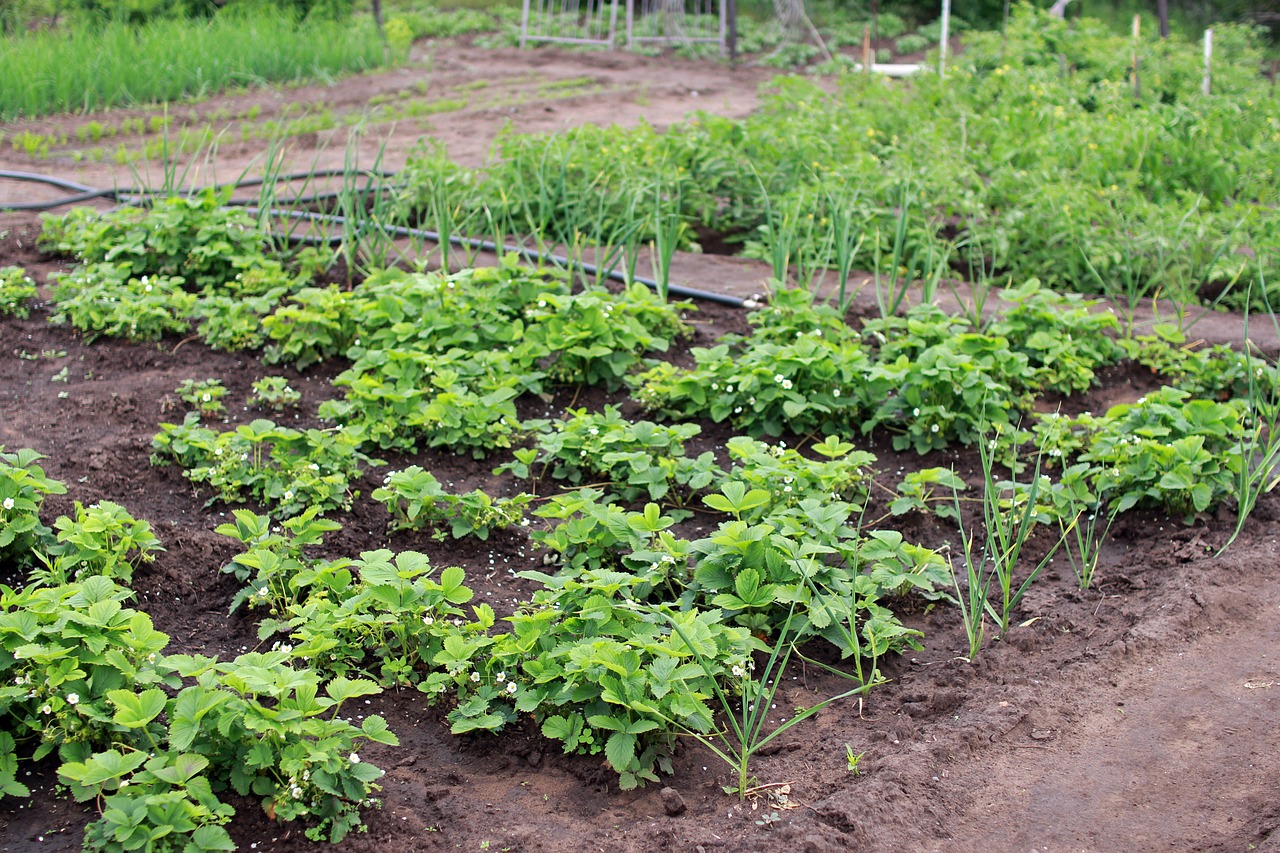
Place Lettuce and Spinach Next to Strawberries
Strawberries are ground cover plants, but they can also be planted well with other ground cover crops. The runners of the strawberries find their way and grow around the other plants. Good companions here are lamb's lettuce, garden lettuce and spinach, for example. If you have a problem with ants in the bed, lamb's lettuce can help keep them away. It also goes well with strawberries, as it forms deep roots that loosen and drain the soil. Garden lettuce is said to keep fleas away from its companions, but you should be careful not to plant the lettuce too close to the strawberries. Garden lettuce usually has shallow roots. Postelein and rocket are good companions that you can also sow next to your strawberries in winter. Strawberry varieties in particular, which produce large fruits and need a lot of light, benefit from a low companion planting that does not cast any shade.
Planting Physalis and Strawberries Together
Just like strawberries, physalis loves sandy locations, so these plants complement each other well as companions in the border. In addition, physalis is a medium-feeding plant that requires little fertilizer. This goes well with strawberries, as other shade plants are heavy feeders and need significantly more nutrients (especially nitrogen) and therefore fertilizer. Strawberries can only cope with this to a limited extent. It's best to give your Andean strawberry a trellis so that it grows upwards and doesn't fall on the strawberries. In addition to tall-growing plants, you should choose strawberry varieties such as wild strawberries, which produce delicious, sweet fruit even in partial shade.
Which Herbs Go Well With Strawberries?
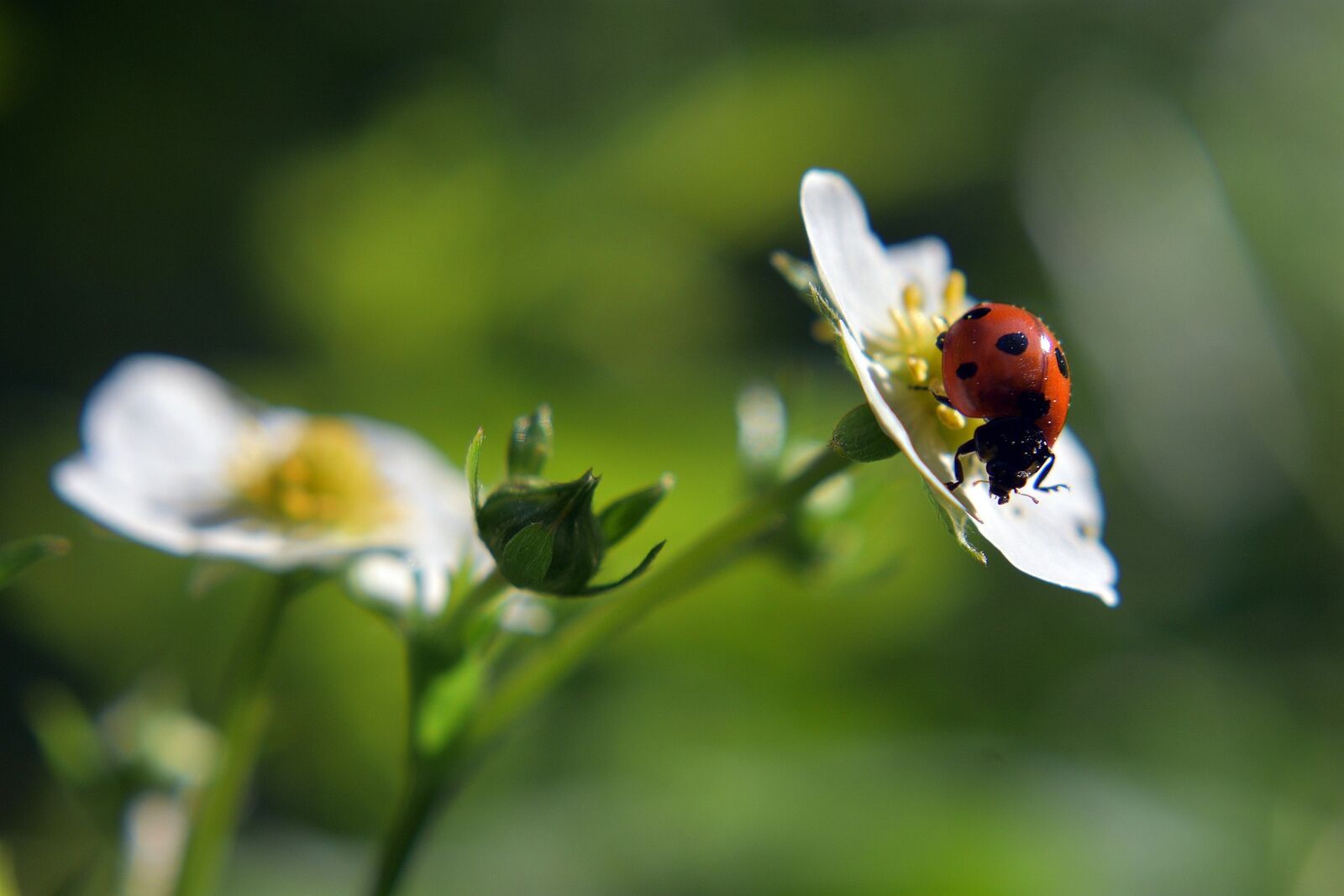
Herbs and flowers in companion planting bring great added value. On the one hand, they produce flowers that attract pollinators and provide them with food. On the other hand, most herbs and flowers have a very strong scent that keeps many diseases and pests at bay. All in all, they contribute to good plant health in the bed and support vegetable plants in their growth.
In addition to strawberries, marigolds are a good choice as they protect against hungry soil organisms such as nematodes and wireworms. Chives are also a suitable herb for your strawberry bed. As a bulbous plant, chives are effective against a wide range of diseases and pests, but are primarily intended to keep fungal diseases at bay. Mint is also a good companion next to strawberries to keep ants and beetles away. However, you should bear in mind that mint plants have quite strong root growth. Therefore, only plant mint with a root barrier next to your strawberry plants to prevent them from becoming overgrown. Lemon balm and oregano also harmonize very well with strawberry plants.
Our tip: You can use the Yield Calculator to work out the yield per square meter that you can expect from your vegetable beds. On the other hand, you can also calculate how much space you would need for a certain yield. An interesting tool, especially for budding self-supporters!
Bad Companion Plants for Strawberries
Plants that do not do well next to strawberries are mainly brassicaceae. Cauliflower, broccoli, Chinese cabbage, kale, head cabbage, pak choi, palm cabbage, Brussels sprouts and savoy cabbage are not good companions for strawberry plants. On the one hand, these cabbages have completely different soil requirements and like to grow in medium to heavy soils. Strawberries, on the other hand, like sandy soils and are more likely to suffer from root rot in heavy soils. On the other hand, they also have different nutrient requirements and charcoal needs quite a lot of nitrogen. Strawberries do not like this either and react with a higher susceptibility to diseases. As you can see, this combination encourages diseases and pests in your bed! What's more, these two crops also attract similar pests. This combination attracts the Cabbage White Butterfly, for example, which likes to eat cabbage and strawberry leaves. But fungal diseases also like to spread to these two crops, which accelerates infestation and spread. If you suspect that your strawberry plants are affected by a disease, you can find an Overview of the Most Common Plant Diseases in this article.
Other antagonistic plants for strawberry plants are Jerusalem artichoke and lovage. Jerusalem artichokes have very strong root growth and would overgrow the strawberries. Lovage is generally said not to be a good partner in a mixed culture, as it secretes growth-inhibiting substances from its roots.
Companion Planting Table: Good and Bad Companion Plants at a Glance
| Companion Plants | Antagonistic Plants |
|---|---|
| bush bean | cauliflower |
| cress | chinese cabbage |
| garlic | kale |
| kohlrabi | lovage |
| leek | pak Choi |
| lemon Balm | palm cabbage |
| mint | brussels sprouts |
| oregano | jerusalem artichoke |
| physalis | white cabbage |
| postelein | savoy cabbage |
| radishes and radish | |
| marigold | |
| rocket | |
| lettuce (lamb's lettuce, garden lettuce) | |
| chives | |
| spinach | |
| onions |
Block error: "The file "/var/www/vhosts/test.fryd.app/content/1_magazin/186_mischkultur-mit-erdbeeren/strawberries-planting-plan-good-neighbors.pdf.de.txt" is not writable" in block type: "download"
Succession Cropping & Crop Rotation With Strawberries
Succession cropping and crop rotation are two important methods of growing vegetables to keep the soil healthy. If you don't know What Crop Rotation Is you can read more about it in this article. Strawberries are not self-compatible (exception: wild strawberries). Strawberries need time to establish themselves properly and only produce the highest yields in the second and third year after planting. After the third year, the location must be changed. You should always take a cultivation break of 3 to 4 years to prevent diseases, pests and soil fatigue. Numerous types of vegetables are good pre and post-crops, as strawberries belong to the rose family. For varied succession cropping, you can therefore choose a wide variety of vegetable plants to provide the soil with variety. As strawberries are a medium- and heavy-feeder crop, both light and heavy feeders are suitable for good succession cropping.
Companion Planting Plan With Strawberries: Ideas & Examples
For inspiration, here are some example planting plans for your companion planting with strawberries.
If you have any questions or comments, please write to us at magazin@fryd.app. Would you like to receive helpful gardening tips all year round and plan your own beds optimally? Then register here or download the Fryd app for Android or iOS.
Fryd - your digital bed planner
Cover picture from Lakeblog on Pixabay.
Marie
Current Topics in the Community

Advertising

There must have been something in front of the lens
This is a contribution
Popular Articles

Companion Plants for Carrots: What (Not) to Plant With Carrots

Companion Plants for Celery : What (Not) to Plant With Celery?

Strawberry Types: List of Best Strawberry Varieties

Companion Planting With Strawberries: Companion Plants and Planting Plan

Basil Varieties & Types at a Glance

What to Plant With Cabbage: Good and Bad Companion Plants

Fertilizing Strawberries: Home Remedies & Natural Fertilizers at a Glance

Growing Sweet Potatoes: Tips on Cultivation & Companion Plants

Companion Plants for Kitchen Herbs: Chives, Parsley & Co

What Herbs Can Be Planted Together?
FAQ
What to plant next to strawberries?
Garlic, kohlrabi, leeks, bush beans, radishes, radishes, rocket, lamb's lettuce and onions, for example, go well with strawberries. However, some herbs such as chives, oregano, lemon balm and mint also harmonize well with strawberries - as do flowers such as marigolds.
What are bad planting partners for strawberries?
Cabbage plants don't do so well next to strawberries. Look for a different spot for cauliflower, Chinese cabbage, kale, pak choi, palm kale, Brussels sprouts, white cabbage and savoy cabbage. Lovage and Jerusalem artichokes are also not good neighbors.
What goes well with strawberries in a raised bed?
Strawberries go well alongside garlic, leeks, radishes and radishes in a raised bed. Root vegetables in particular benefit from the deep, loose soil and thrive well here. Salads also do well next to strawberries. They are also more protected in a raised bed.
Which flowers and herbs go well with strawberries?
Marigolds, cress, oregano, lemon balm, mint and chives go well in strawberry beds and contribute to healthy plants. However, only plant mint in the bed with a root barrier, otherwise it will proliferate.